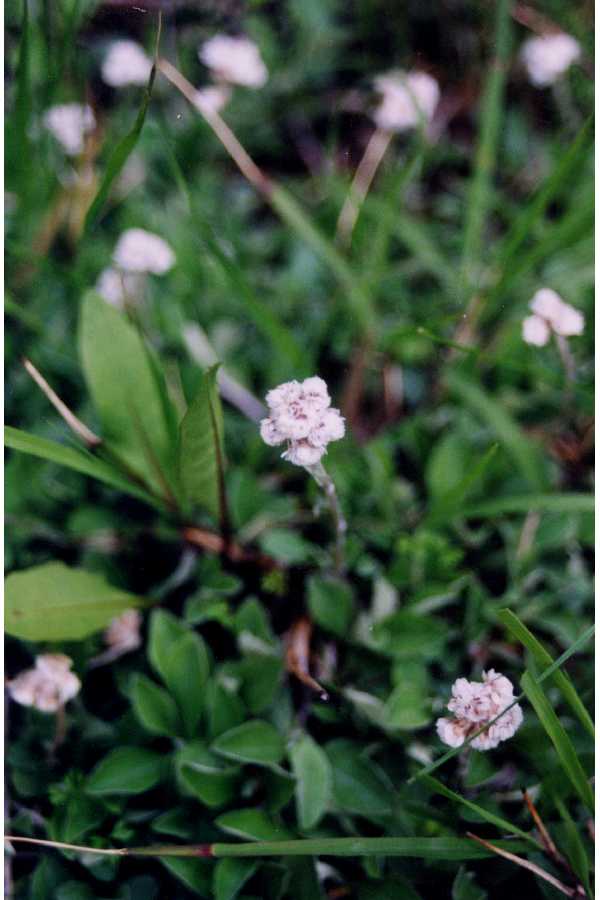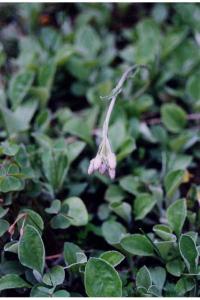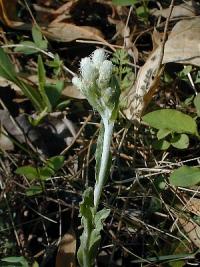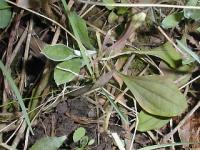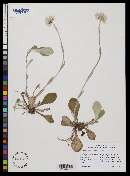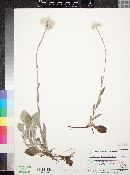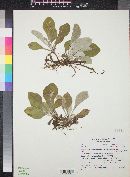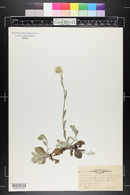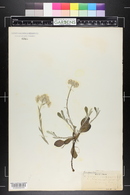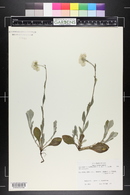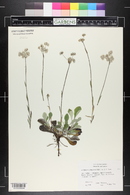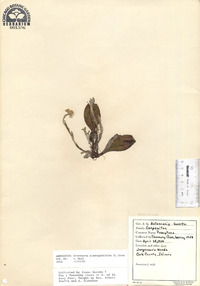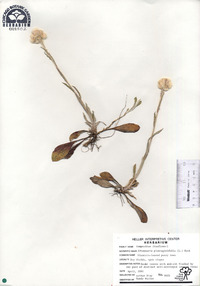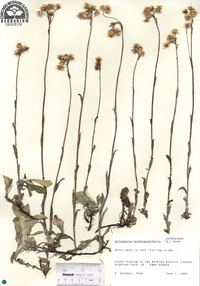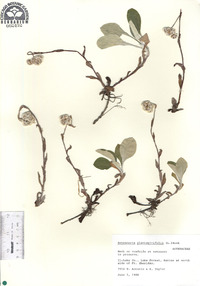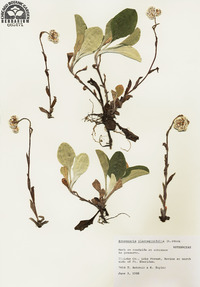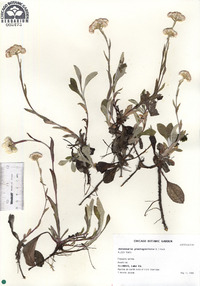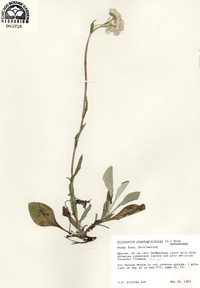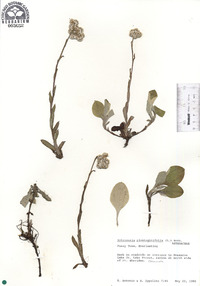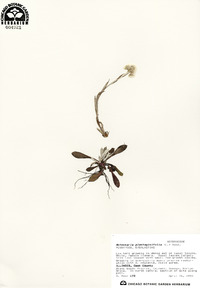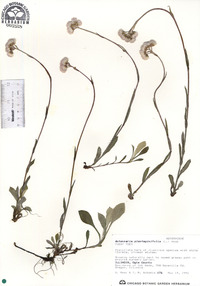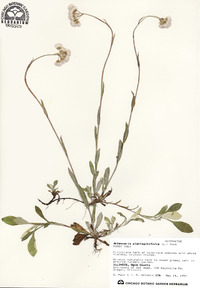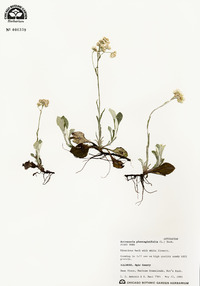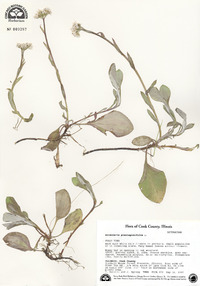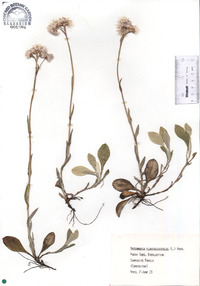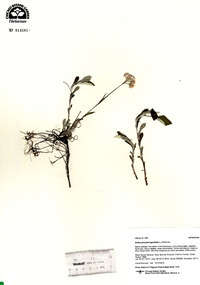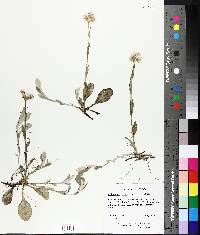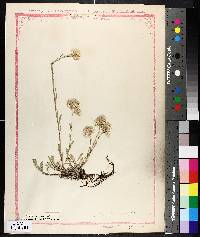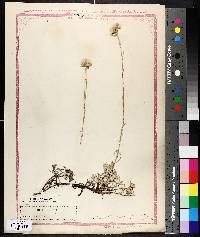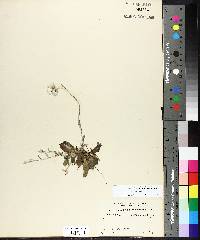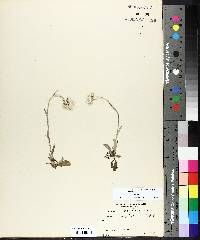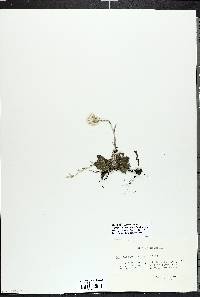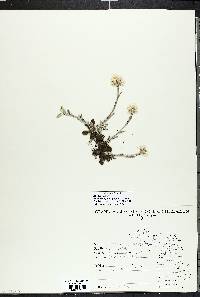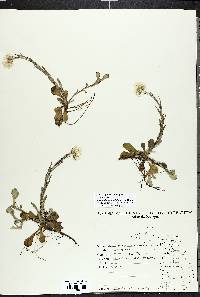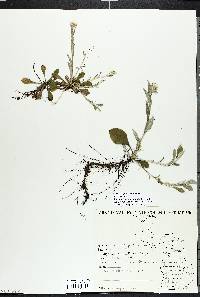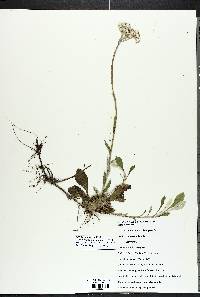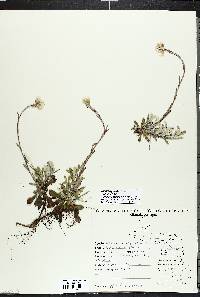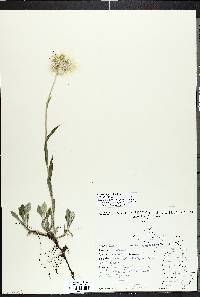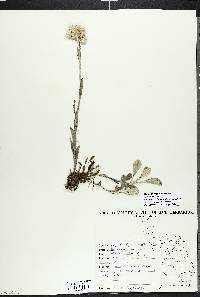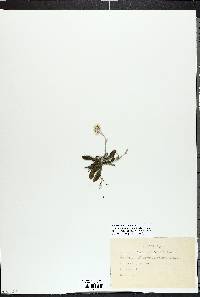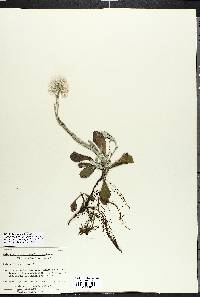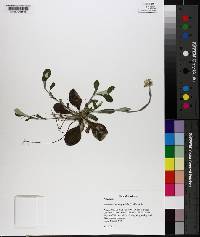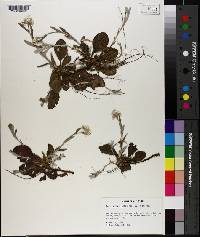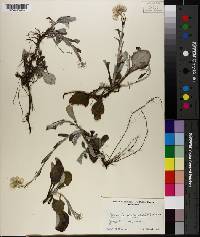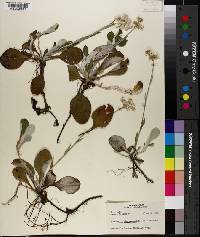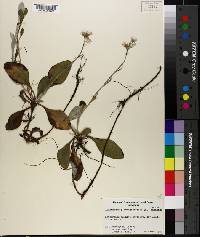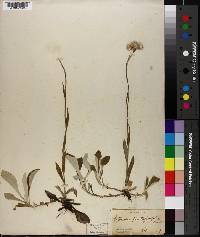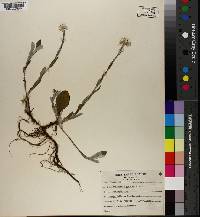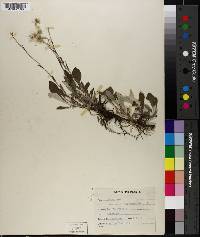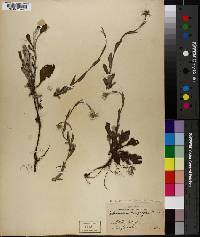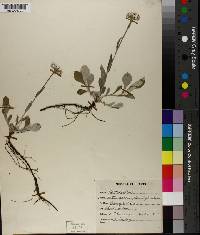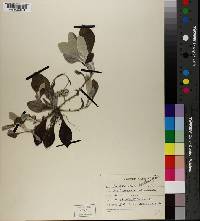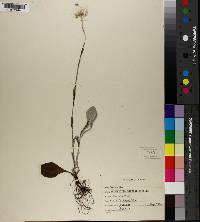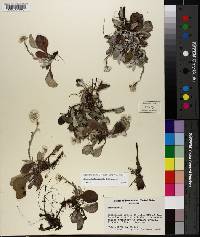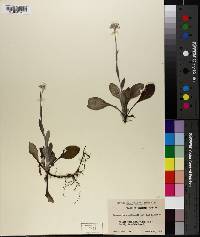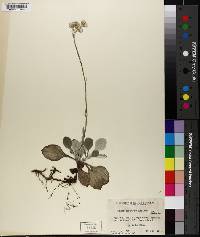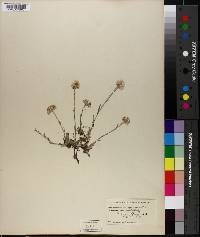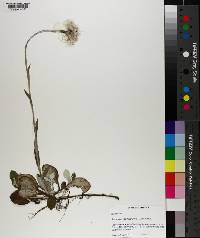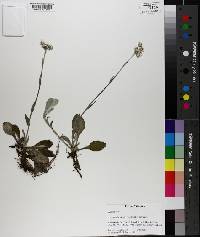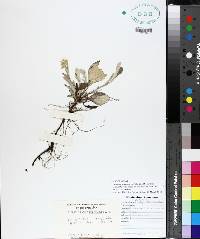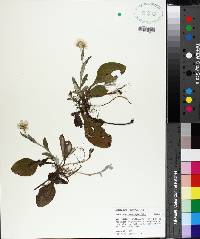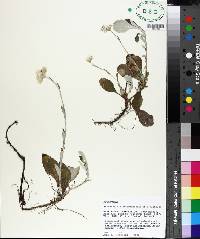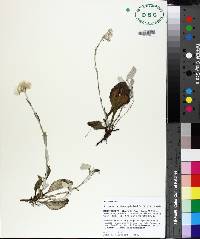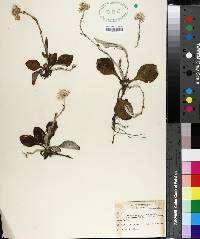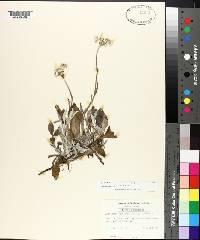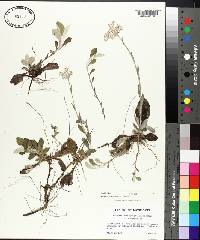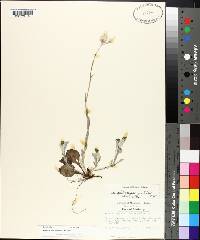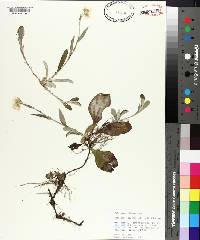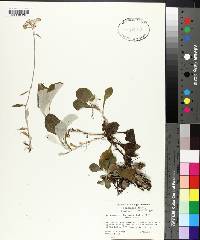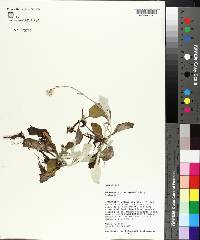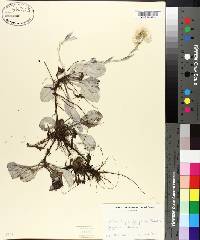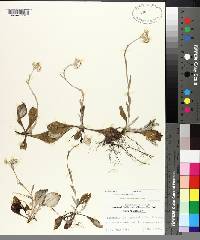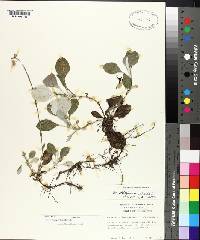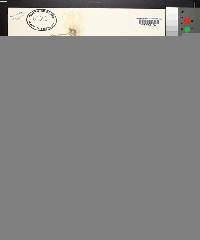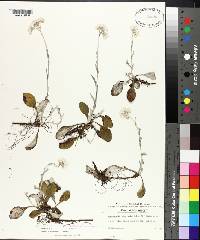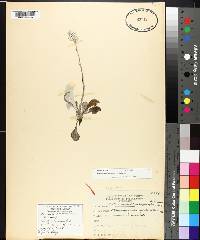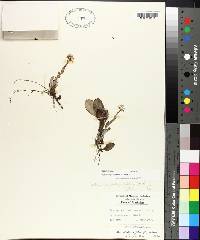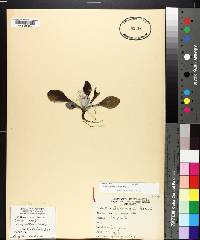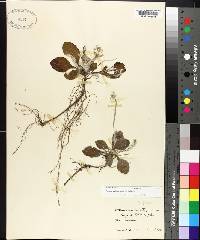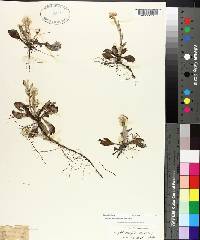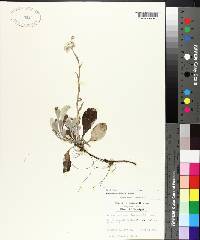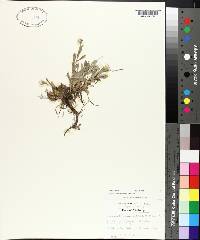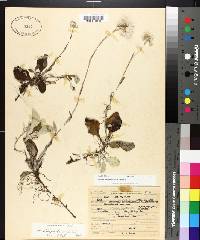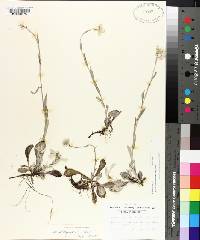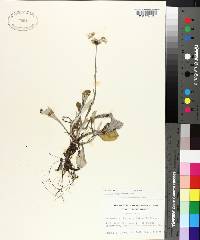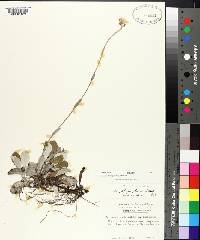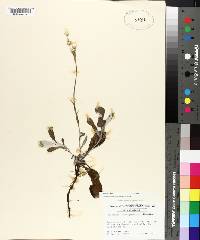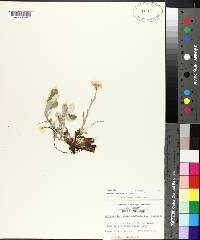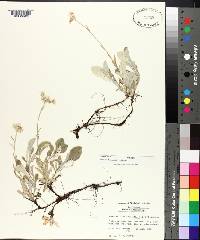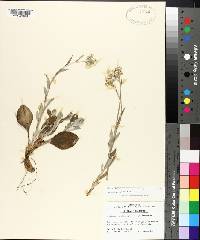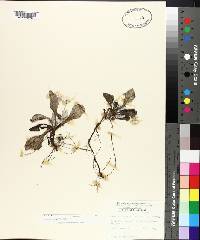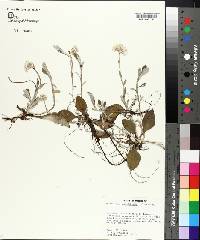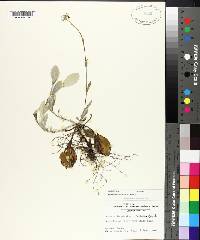Antennaria plantaginifolia
|
|
|
|
Family: Asteraceae
Woman's-Tobacco
[Antennaria caroliniana Rydb. ex Small, moreAntennaria decipiens Greene, Antennaria denikeana B.Boiv., Antennaria nemoralis Greene, Antennaria petiolata , Antennaria pinetorum Greene, Antennaria plantaginea var. petiolata Fern., Antennaria plantaginifolia var. petiolata (Fernald) A.Heller, Gnaphalium plantaginifolium L.] |
Dioecious. Plants 6.5-20(-25) cm. Stolons 2.5-7.5 cm (mostly ascending when young). Basal leaves (petiolate) 3-5(-7)-nerved, obovate to suborbiculate, 35-75 × 15-35 mm, tips minutely mucronate, abaxially tomentose, adaxially green-glabrescent to gray-pubescent. Cauline leaves linear, 6.5-35 mm, distal flagged. Heads 4-17(-30) in tight corymbiform arrays. Involucres: staminate 5-7(-8) mm; pistillate 5-7 mm. Phyllaries distally white. Corollas: staminate 2-3.5 mm; pistillate 3-4 mm. Cypselae 0.5-1.6 mm, slightly papillate; pappi: staminate 2.5-4 mm; pistillate 3.5-5.5 mm. 2n = 28. Flowering mid-late spring. Dry, open, deciduous woodlands, tops of banks, ridges, and bluffs, sandstone formations, slopes in openings in woodlands; 0-1500 m; Man., N.B., N.S., Que.; Ala., Ark., Conn., Del., Fla., Ga., Ill., Ind., Iowa, Ky., Maine, Md., Mass., Minn., Miss., Mo., N.H., N.J., N.Y., N.C., Okla., Pa., R.I., S.C., Tenn., Vt., Va., W.Va., Wis. Antennaria plantaginifolia is a diploid progenitor of the A. parlinii complex and is similar to that species except for smaller heads and adaxially gray-pubescent basal leaves (R. J. Bayer and G. L. Stebbins 1982; Bayer 1985b; Bayer and D. J. Crawford 1986). It is a diploid ancestor of the A. howellii complex. It is found in the Appalachian region; disjunct populations occur in the driftless area of Wisconsin and Minnesota (Bayer and Stebbins).
Plants 1-4 dm, stoloniferous, the stolons sparsely leafy or merely bracteate; basal lvs and those at the ends of the stolons densely and persistently tomentose beneath, only sparsely so (and eventually glabrate) above, or the upper side glabrous (or somewhat glandular) from the first, tending to persist throughout the winter, large, 3- or 5-nerved, evidently petiolate, the blade ovate to elliptic or obovate, mucronate, the larger ones 2-6 נ1.5-5 cm; cauline lvs reduced, mostly linear or oblanceolate; heads several in a generally subcapitate cyme; pistillate invols 5-10 mm, the bracts white-tipped (often pinkish toward the base), striate; staminate invols avg smaller, with broader and more conspicuous white tips to the bracts; styles often crimson; variously sexual or apomictic, diploid or polyploid. Open woods and dry ground; N.S. and N.B. to N.D. and e. Mont., s. to Ga., La., and Tex. Apr.-June. Three vars. all widespread. Gleason, Henry A. & Cronquist, Arthur J. 1991. Manual of vascular plants of northeastern United States and adjacent Canada. lxxv + 910 pp. ©The New York Botanical Garden. All rights reserved. Used by permission. From Flora of Indiana (1940) by Charles C. Deam In dry soil on wooded slopes. I believe this species is rare in Indiana and that it is often confused with the next species [Antennaria parlinii subsp. fallax]. ...... Indiana Coefficient of Conservatism: C = 3 Wetland Indicator Status: N/A Diagnostic Traits: Similar to A. parlinii but rare. Differs in involucre in female heads only 5-7 mm high; both male and female plants present in a population. |

